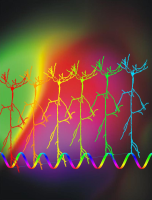Challenges and benefits of multichannel electrophysiology
Chair: Andrzej Wrobel, Nencki Institute of Experimental Biology, Poland

Advances in techniques for electrophysiological recording as well as in analytical tools are enabling fascinating conceptual and engineering developments in present-day electrophysiological studies of the brain. This workshop will gather together the scientists contributing to new experimental, theoretical and engineering approaches to this branch of systems neuroscience.


Invited speakers:
Rutgers University, USA
Title: Large-scale recording of unit and field activity with silicon probes

Johns Hopkins University, USA.
Title: Studying brain functions during natural vocal behaviors using multi-channel wireless recording technology
Abstract: A crucial step in understanding the relationship between the brain and behavior is to study underlying neural mechanisms during natural behaviors. However, many natural behaviors of interest to neurophysiologists are difficult to study under laboratory conditions because such behaviors are often inhibited when an animal is restrained and socially isolated. Even under the best conditions, such behaviors may be sparse enough as to require long-term and simultaneous recording of multiple neurons across several brain areas in order to gather a sufficient amount of data for analysis. One approach to overcome these problems is to combine multi-channel chronic recording techniques with telemetry technology. There are several challenges when taking such an approach to study neural coding mechanisms in mammalian cortex, in particular in animals with three-dimensional movements such as non-human primates. A much desired property of chronic recording techniques is the ability to advance each microelectrode with fine resolutions for isolating individual neurons. A miniaturized broadband telemetry system is necessary to relay multiple channels of behavioral and neural signals with high fidelity and without significantly altering an animal’s behavior. We have developed a unique preparation for chronic multi-electrode recordings from the auditory cortex of free-roaming primates during natural vocal behaviors. I will use our recent studies of neural mechanisms underlying auditory-vocal interactions to highlight the challenges and opportunities in using multi-channel wireless recording technology.
Duke University Medical Center, USA.
Title: Computing with Neural Ensembles
Abstract: In this talk, I will review a series of recent experiments demonstrating the possibility of using real-time computational models to investigate how ensembles of neurons encode motor information. These experiments have revealed that brain-machine interfaces can be used not only to study fundamental aspects of neural ensemble physiology, but they can also serve as an experimental paradigm aimed at testing the design of modern neuroprosthetic devices. I will also describe evidence indicating that continuous operation of a closed-loop brain machine interface, which utilizes a robotic arm as its main actuator, can induce significant changes in the physiological properties of neurons located in multiple motor and sensory cortical areas. This raises the hypothesis of whether the properties of a robot arm, or any other tool, can be assimilated by neuronal representations as if they were simple extensions of the subject's own body.



